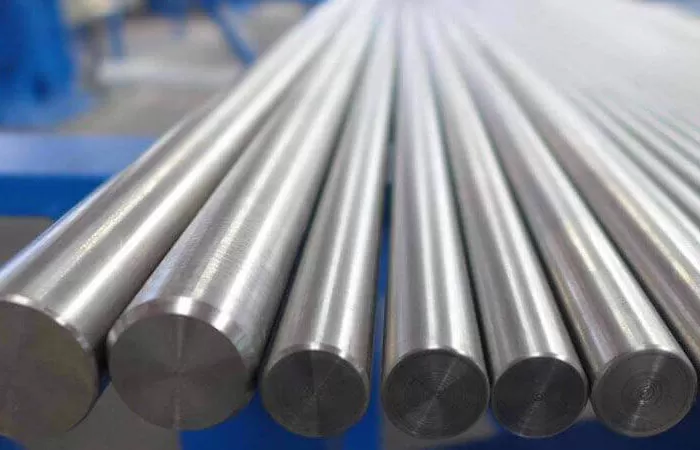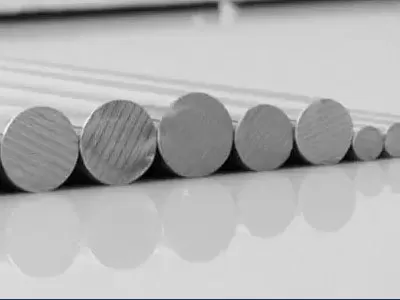
Walk through a chlor-alkali plant and you’ll find some of the harshest industrial environments on earth. Concentrated salt brine, chlorine gas, caustic soda, and acidic wash cycles combine to eat away at equipment faster than nearly any other process. Structural rods and supports inside electrolyzers, heaters, and chlorine scrubbers face relentless attack—often failing in less than a year if built from conventional stainless steel.
Enter Hastelloy C-22 rods, engineered to stand firm against this chemical onslaught. Known for their broad-spectrum corrosion resistance, these rods are redefining longevity and reliability in chlor-alkali operations.
The chlor-alkali process involves the electrolysis of brine (NaCl solution) to produce chlorine (Cl₂), hydrogen (H₂), and sodium hydroxide (NaOH). The process creates multiple corrosive factors:
High chloride content (20–25% NaCl brine)
Wet chlorine gas, which is both oxidizing and acid-forming
Periodic acid cleaning cycles with HCl or H₂SO₄
Temperature fluctuations up to 80–90°C in brine heaters
Mechanical stress from pipe hangers, frames, and dynamic components
Even premium stainless steels (316L, 904L) and duplex grades (2205, 2507) suffer:
Pitting corrosion in high-chloride brine
Stress corrosion cracking (SCC) from tensile loads
Crevice corrosion around flanges, threads, and rod assemblies
The industry needed a better solution—Hastelloy C-22 answered that call.
Hastelloy C-22 (UNS N06022) is a nickel-chromium-molybdenum-tungsten alloy designed for universal corrosion resistance.
Nickel (Ni): ~56%
Chromium (Cr): 22%
Molybdenum (Mo): 13%
Tungsten (W): 3%
Iron (Fe): 3%
Trace elements: Co, Mn, V
Resists both oxidizing and reducing environments, a rare capability
Superior pitting and crevice corrosion resistance compared to 625 and C-276
Stable passive film formation even in wet chlorine and mixed acid-chloride streams
Retains ductility and toughness, allowing it to be fabricated into rods, tie bars, and threaded components
A large chlor-alkali facility in Southeast Asia struggled with frequent failure of 904L stainless steel rods used in:
Electrolyzer frame tie rods
Brine heater supports
Structural connectors in chlorine scrubbers
Issues:
Severe pitting after 9–12 months
Thread galling and crevice corrosion at bolt interfaces
Costly annual replacements and unplanned downtime
Solution:
The plant upgraded to Hastelloy C-22 rods (solution-annealed and electropolished).
Results after 3 years:
No measurable pitting or thread degradation
Maintenance interval extended from 1 year to 4+ years
Downtime costs reduced by >60%
Improved safety margins, as critical components retained >95% of original tensile strength
Operations Manager quote:
“C-22 rods eliminated one of our biggest maintenance headaches. They’re practically corrosion-proof in this environment.”
The strength of Hastelloy C-22 lies in its high molybdenum and tungsten content, which provides exceptional resistance to localized corrosion (pitting and crevice attack). Chromium ensures oxidizing resistance, while the nickel base makes it immune to chloride-induced SCC.
Critical Pitting Temperature (CPT): ~70°C in 6% FeCl₃ (vs. 20°C for 316L)
Crevice Corrosion Test (ASTM G48): No attack after 72h at 50°C
Stress Corrosion: Passes 30-day exposure in boiling MgCl₂ solution without cracking
C-22 rods can be:
TIG welded (GTAW) or plasma welded with filler metals like ERNiCrMo-10
Threaded or machined without work hardening issues (using sharp carbide tooling)
Hot-formed at 1100–1200°C with excellent grain stability
Electropolished for smooth, contamination-free surfaces in chlorine service
Its fabrication flexibility allows OEMs and plant engineers to design custom rod assemblies for both static and dynamic load-bearing.
| Property | C-22 | Alloy 625 | 904L Stainless | Titanium Gr.7 |
|---|---|---|---|---|
| Chloride Pitting | Excellent | Very Good | Moderate | Good |
| Wet Cl₂ Resistance | Excellent | Good | Poor | Good |
| Stress Corrosion Cracking | Excellent | Very Good | Poor | Good |
| Weldability | Good | Good | Good | Moderate |
| Cost | High | Moderate-High | Low | High |
| Service Life (avg) | 3–5 years+ | 2–3 years | <1 year | 2–3 years |
Beyond chlor-alkali plants, C-22 rods are critical in:
Chlorine dioxide plants (for pulp & paper bleaching)
Wet Cl₂ gas scrubbers
Sodium hypochlorite and bleach production
Acidic wastewater treatment
Their universal corrosion resistance means they can be applied across diverse chlorine and halogen-heavy industries without extensive alloy qualification testing.
In brine, chlorine, and caustic environments, where even duplex stainless steels give up, Hastelloy C-22 rods are the solution. They bring:
Extended service life
Lower maintenance costs
Higher plant safety and uptime
When your plant is fighting chemical attack on every front, C-22 rods are the ultimate defense line.

2025-11-19 14:09:22

2025-11-07 17:27:49

2025-11-05 15:44:44

25th floor, C3 Building, Wanda Plaza, Kaifu District, Changsha, Hunan Province, China